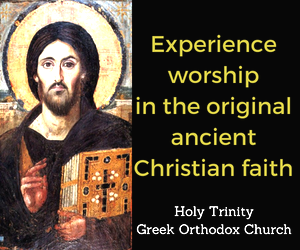‘Cremation of the Century’ celebrates Bali’s rich Hindu culture
Commentary by Nick Gier | FāVS News
At the end of the month Cheryl and I will fly to Indonesia to join a Viking cruise. The ship will be calling on ports in Bali, Jakarta, Singapore, Malaysia and Thailand. The trip is not only for pleasure and edification, but I will also be doing research on religious violence in Indonesia.
Before the relatively peaceful conversion of the 16,000 plus islands to Islam starting in the 13th century, the country was ruled by dozens of Buddhist and Hindu kingdoms, which, on occasion, warred against one another. Bali is the last Indonesian island to preserve its Hindu heritage.
In 1992, I participated in a Smithsonian tour to Bali where I experienced the wonders of its Hindu culture for two exciting weeks. Our first stop was at a temple that was celebrating its birthday.
After the temple is cleaned, repaired and decorated, its entrance is festooned with white umbrellas and black and white checkered cloth. The opposing colors represent social and spiritual harmony much like the Chinese yin and yang.
The ceremony begins with sacred dances by the pre-teen girls of the temple’s village. The eldest unmarried daughters in each household have prepared an elaborate tower of fruit and flowers, some as high as the young woman herself.
The temple priest blesses each offering and performs elaborate rituals. Then, the sacred dancers, together with young boys holding checkered flags, lead the young women, carrying the offerings on their heads, to a central square where traditional plays and music are performed.
The most spectacular event was what our guide called the “Cremation of the Century.” Over 170 families had waited, some for years, to honor their dead along with the cremation of the queen of one of Bali’s eight ancient Hindu kingdoms.
As we toured the island, we could see the preparations that the families were making. Along the road, we found ornate cremation thrones — some with pictures of the deceased. When the big day arrived, the men of the family would carry these to the main cemetery where the dead were disinterred from their temporary graves (leaving quite a mess!). After a priest performed the required rituals, the remains were placed in a cremation vessel and then lit a flame.
We noticed a long white cloth hanging down the ladder of one of the higher caste cremation towers. We learned that the grandchildren of the deceased are charged with leading the soul to the cremation site by carrying this long piece of fabric.

Meanwhile, the royal family was preparing for a parade through the streets of Denpasar, the Balinese capital. Power lines had to be removed for the passage of her 70-foot-high cremation tower. Its 11 stacked roofs indicated that it was for a queen; a king’s tower would have had 13 layers. About 250 men carried the giant structure.
On a separate platform we saw a huge paper maché sculpture of a white cow. If the deceased were a king it would have been a black bull. The cow/bull is the totemic animal of the Hindu god Shiva and high caste members have these custom-made at great expense. Other ruling caste members choose winged lions, and the working castes’ smaller sarcophagi are shaped in the form of a hybrid elephant fish.

The cremation parade is led by a gamelan orchestra whose major instruments are metallophones, xylophones, bamboo flutes and a zither-like instrument called a siter. After the gamelan orchestra, came men dressed in the checkered fabric carrying ceremonial spears.
Following these men, women from the royal court came by holding items from the queen’s apartment and boudoir. After that, just in front of the huge cremation tower, men carried an effigy of the queen.
During the rest of the two weeks, we enjoyed traditional dances and an all-night performance of the Mahabharata, a Hindu scripture that is the world’s longest religious text. It is a one man show where, incredibly enough, a man manipulates puppets, plays the music, and sings the narration simultaneously.
As a sign of the blending of religious traditions, these puppet masters are Muslim, and this Hindu scripture, along with the Hindu Ramayana, have become an integral part of Indonesia’s rich cultural heritage.
Gier taught religion and philosophy at the University of Idaho for 31 years. He spent over two years studying in India and has traveled to religious sites in eleven other Asian countries. Email him at ngier006@gmail.com.
The views expressed in this opinion column are those of the author. They do not necessarily reflect the views of FāVS News. FāVS News values diverse perspectives and thoughtful analysis on matters of faith and spirituality.








Different cultures enrich my life — thanks for this today. And I can’t wait to read what you write about your travels! Be safe, Nick.